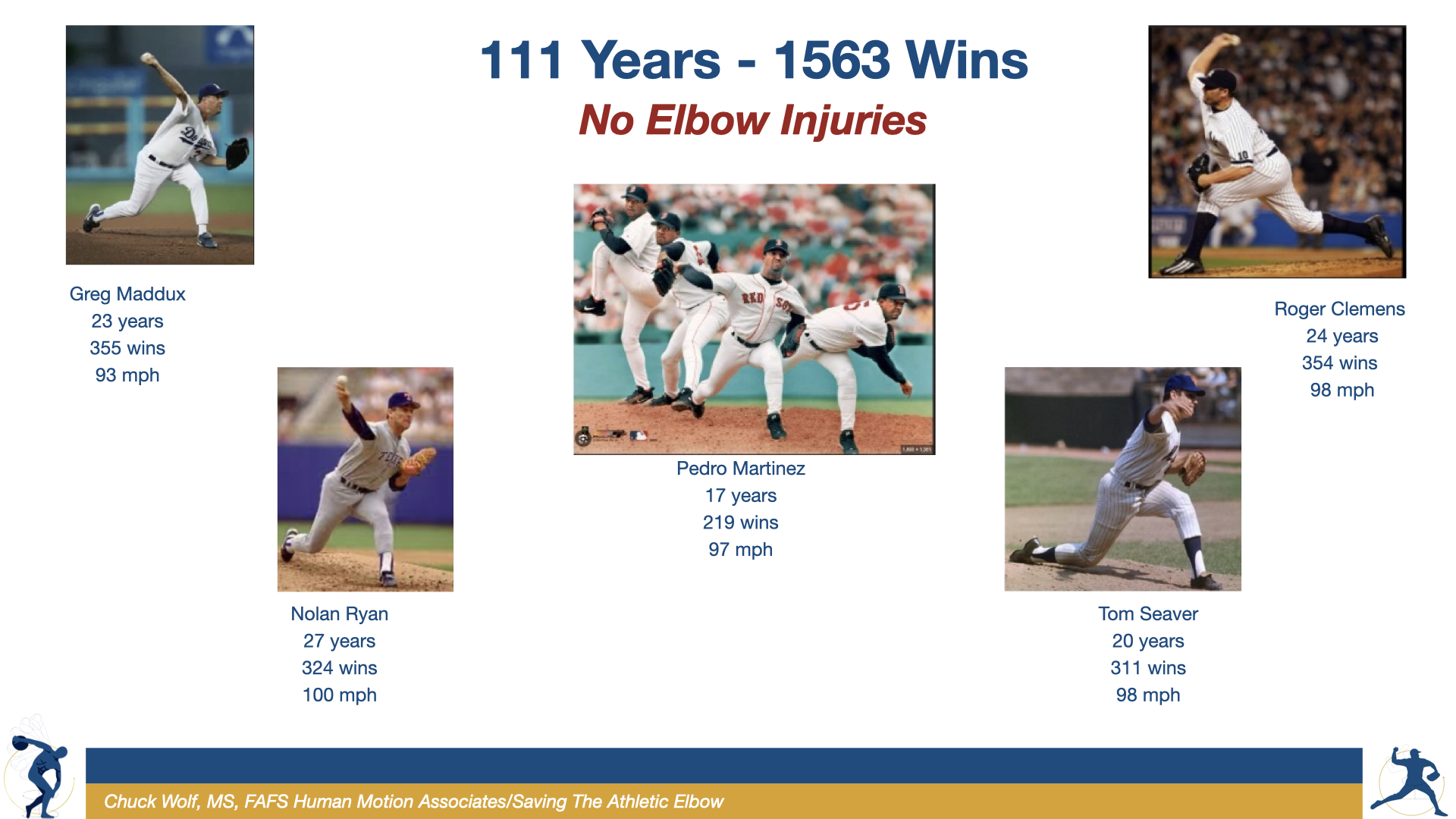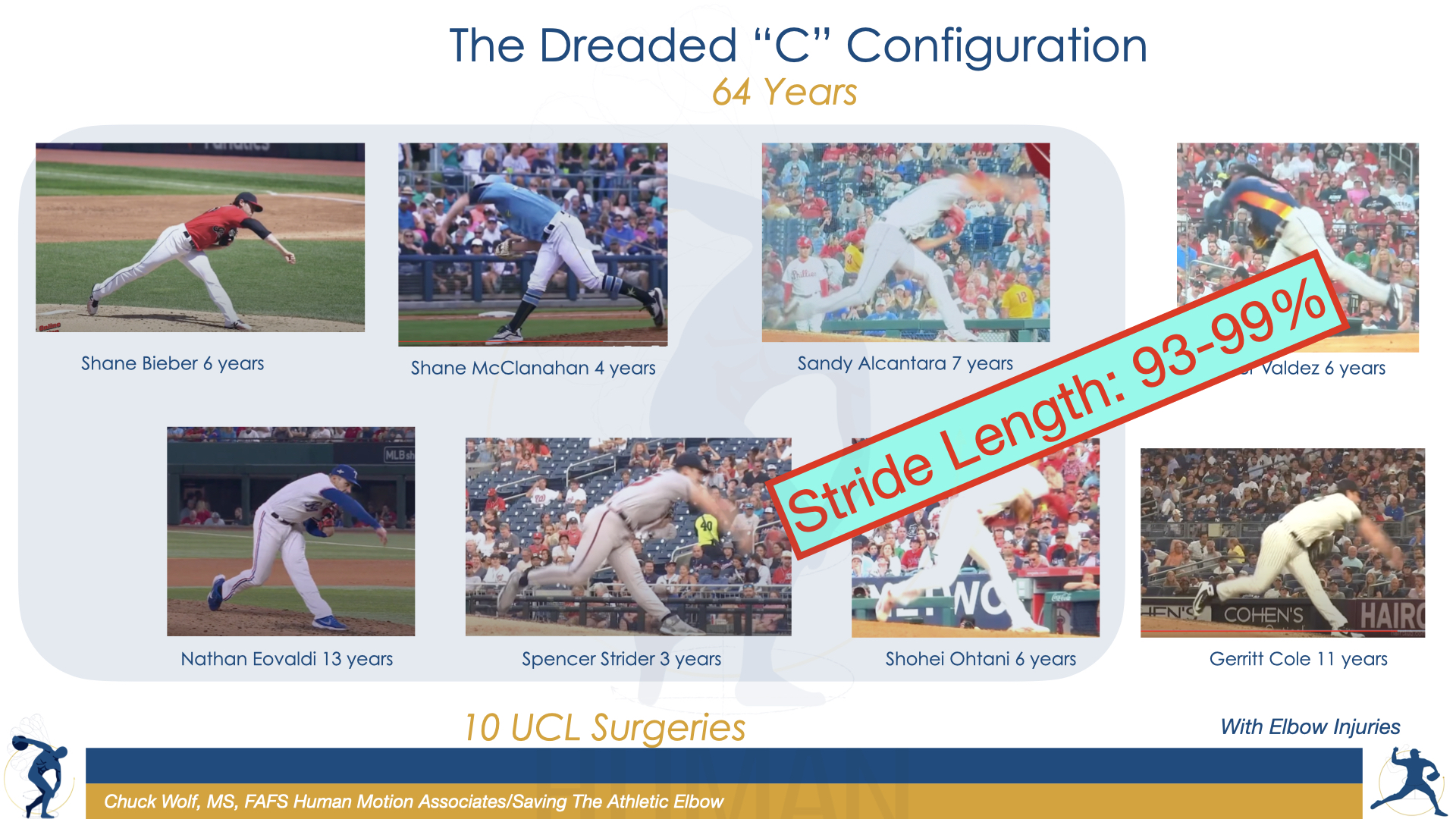
One of the most common mechanical breakdowns in pitching is over striding. This happens when a pitcher lands on the heel of the front foot instead of landing on the mid foot. While it may not look like a big deal, this one movement sets off a chain reaction through the entire body that can put the elbow—and specifically the Ulnar Collateral Ligament (UCL)—at serious risk.
When the front heel strikes first, the ankle naturally falls into plantar flexion (toes pointing downward). That position shortens the tissues of the foot and calf, tightening the plantar fascia and calf muscles. Since the calf (gastrocnemius) attaches above the knee and blends with the hamstring fascia, that tension climbs up the back of the leg, pulling through the hamstrings and into the hip.
As a result, the knee extends too early in the delivery. When the hips start to rotate toward the target, the femur externally rotates, and the knee may hyperextend, creating even more stress on the hamstrings.
It doesn’t stop there. As the pitcher bends forward at the hips, the glutes lengthen and transfer tension through their fascia into the lower back and up into the latissimus dorsi (lats).
During the acceleration and deceleration phases of throwing, the scapula (shoulder blade) protracts, pulling even more on the lats. Then, as the arm moves from ball release into follow-through, the back of the shoulder girdle lengthens under stress while the arm moves into internal rotation.
At this point, the soft tissues of the shoulder and arm are doing double duty—stabilizing the joints while also slowing down the throwing motion.
Learn the #1 mechanical flaw that puts the UCL at risk—and discover how to fix it before it leads to injury.
We will send you a short, 5-minute video to help you understand this issue before it becomes a problem.

If a pitcher throws high-stress pitches like a screwball, splitter, or hard change-up, the extra internal rotation and pronation amplify the tension on the posterior shoulder and especially the elbow.
As the fascial system tightens from the ground up, joint compression increases, which reduces the joints’ ability to glide smoothly. That loads the UCL eccentrically while it’s also forced into pronation. Over time, that combination wears down the ligament.
Research shows nearly 70% of pitchers lack at least 30° of internal hip rotation on the front side. If a pitcher has both limited hip mobility and an over stride, the chain reaction we just outlined is amplified—and so is the risk to the UCL. Additionally, research shows optimal stride length between 85 to 88% of height. I have seen players with good mobility be able to attain 92% of their height and still be able to get their chest over the lead leg.
Other mechanics that pile extra stress onto the elbow include:
Tightness in the thoracic spine, subtalar joint, or midfoot can magnify these issues even further.
The good news: over striding is fixable. Here are a few strategies coaches and pitchers can use:

Over striding may look small, but it sets off a full-body chain reaction that starts at the foot and ends at the elbow. Combine that with limited hip mobility or other mechanical flaws, and you’ve got a recipe for UCL breakdown.
The key for pitchers is simple: clean mechanics, hip mobility, and a stride that works with the body instead of against it. By addressing over striding early, coaches and athletes can take a huge step toward protecting arms and extending careers.
For more corrective strategies, please check out my course, Saving The Athletic Elbow. Also referred to our developing and growing exercise library channel on YouTube.

